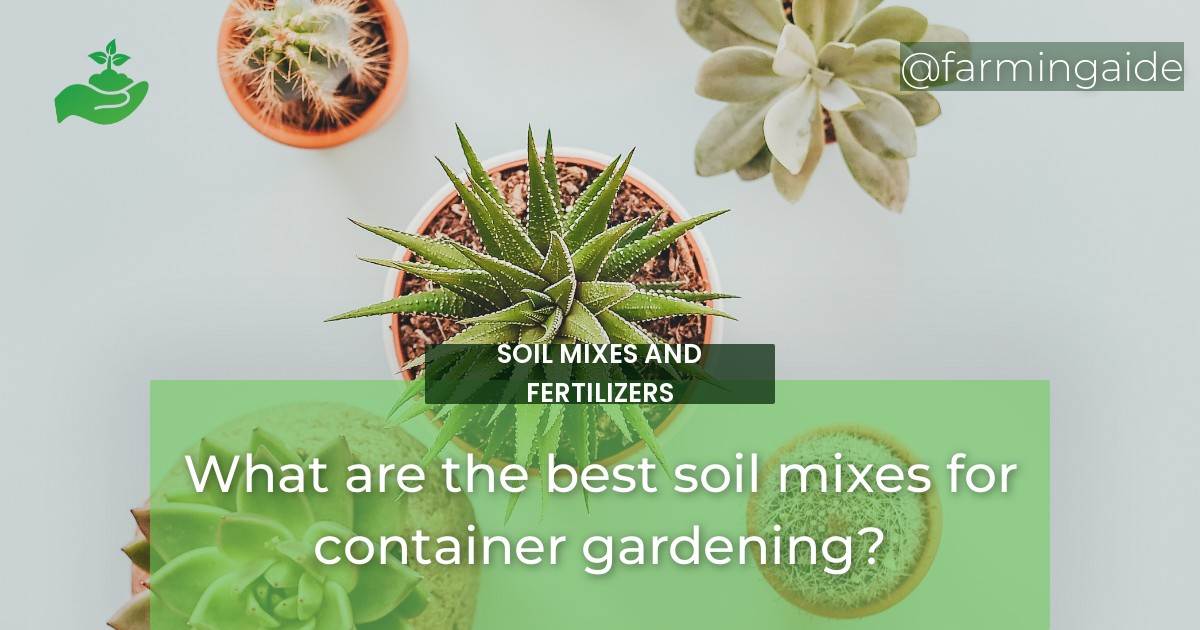Container gardening is an excellent way for people to enjoy fresh produce and beautiful plants, no matter the space available to them. One crucial factor that determines the success of container gardening is the soil mix used. Choosing the right container gardening soil mix is essential for plant growth and development. In this article, we will explore the best soil mixes for container gardening.
Importance of Soil Mix in Container Gardening
Benefits of Using the Right Soil Mix
- Improved plant growth and development
- Increased nutrient retention and availability
- Better water retention and drainage
- Reduced risk of soil-borne diseases
- Longer container life
Drawbacks of Using a Wrong Soil Mix
- Poor plant growth and development
- Increased risk of pest and disease problems
- Reduced nutrient availability
- Increased watering needs
- Reduced container life
Factors to Consider When Choosing Soil Mixes for Container Gardening
Plant Type
The type of plant you intend to grow in your container garden will determine the soil mix that you require. For instance, succulents require a well-draining soil mix, while vegetables require a nutrient-rich soil mix.
Container Type and Size
The container type and size determine the soil mix’s water retention and drainage capabilities. For instance, plastic containers retain more water than clay containers, requiring a soil mix with improved drainage to prevent waterlogging and root rot.
Nutrient Needs
The nutrient requirements of the plant determine the type of soil mix to use. Vegetables require a nutrient-rich soil mix, while cacti require a nutrient-poor soil mix.
Water Retention
The water retention capabilities of the soil mix determine the watering frequency of the container garden. A soil mix with high water retention capabilities requires less frequent watering than one with low water retention capabilities.
ALSO READ
Types of Soil Mixes Suitable for Container Gardening
All-Purpose Soil Mix
This soil mix consists of equal parts of sand, peat moss, and vermiculite or perlite. It is ideal for most plants, including vegetables, flowers, and herbs.
Peat-Based Soil Mix
Peat-based soil mixes are ideal for acid-loving plants such as blueberries and azaleas. Peat provides excellent water retention capabilities, but it is low in nutrients and requires frequent fertilization.
Coir-Based Soil Mix
Coir-based soil mixes are an excellent alternative to peat-based soil mixes. They have better water retention capabilities, are more sustainable, and provide better aeration for the roots. However, they require frequent fertilization due to their low nutrient content.
Perlite and Vermiculite Soil Mix
This soil mix is ideal for container gardeners who want excellent water retention and drainage capabilities. It consists of equal parts of perlite, vermiculite, and peat moss.
Compost-Based Soil Mix
This soil mix is ideal for gardeners who want a nutrient-rich soil mix. It consists of equal parts of compost, topsoil, and sand.
How to Make Your Own Soil Mix for Container Gardening
Materials Needed
- Peat moss or coconut coir
- Perlite or vermiculite
- Compost or well-aged manure
- Topsoil
Steps to Follow
- Combine equal parts of peat moss or coconut coir, perlite or vermiculite, and compost or well-aged manure.
- Add topsoil to the mixture and mix thoroughly.
- Moisten the mixture, but do not soak it, before using it in containers.
ALSO READ
Tips for Maintaining Soil Mixes in Container Gardening
Watering Techniques
- Ensure that the soil mix is moist before watering.
- Water the container garden thoroughly, allowing excess water to drain out of the container.
- Water container gardens frequently during hot and dry weather.
Fertilizing Methods
- Fertilize container gardens with a slow-release fertilizer every two to three months.
- Use a liquid fertilizer to supplement the slow-release fertilizer during the growing season.
- Ensure that the fertilizer is appropriate for the plant type and soil mix.
Soil Temperature
- Avoid placing container gardens in areas with extreme temperatures.
- Protect container gardens from frost by wrapping them with burlap or other insulation material.
Conclusion
Choosing the right soil mix is critical to the success of container gardening. Consider the plant type, container type and size, nutrient needs, and water retention capabilities when choosing a soil mix. Experiment with different soil mixes to determine the most suitable mix for your container garden. Follow the tips provided to maintain the soil mix and ensure the success of your container garden.


